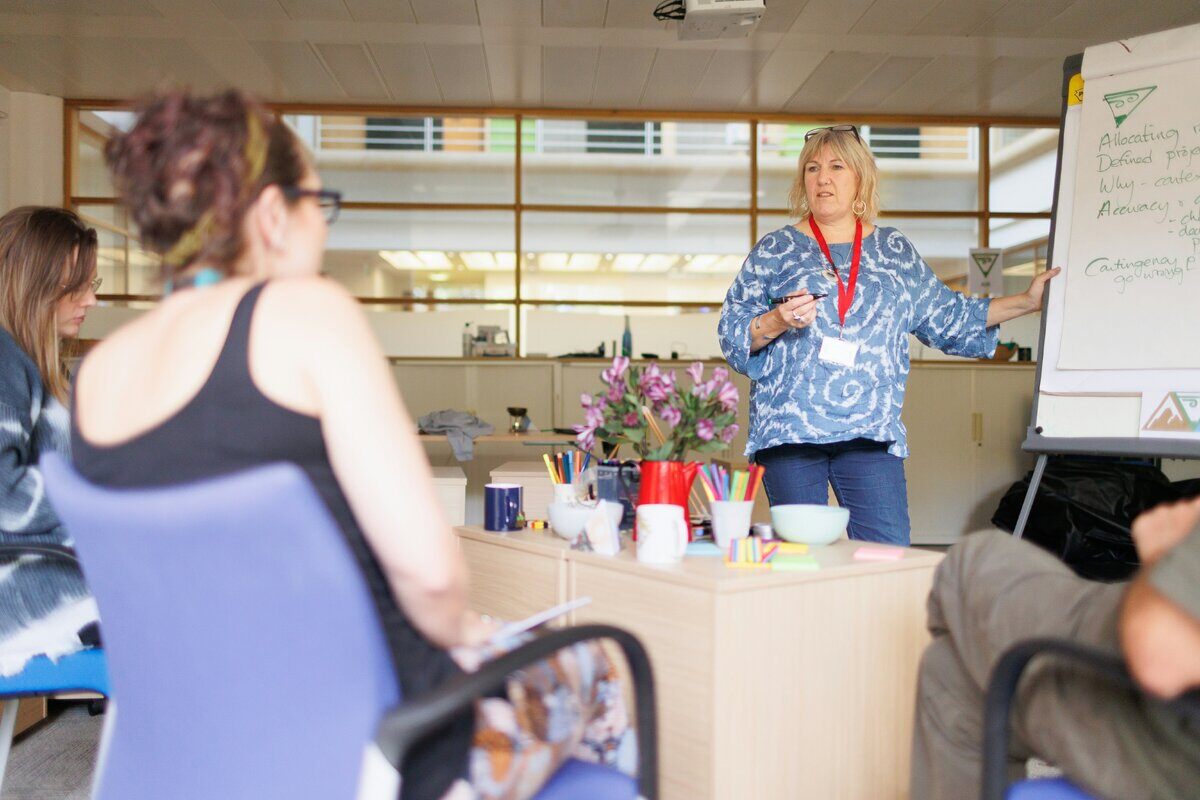
First Steps: How To Start Your New Learning Program
You just got off the phone with a manager who recently finished reading an in-depth article about the uptick in cybercrime. Now he feels the organization isn't doing enough to protect itself from cybercriminals, and he wants you to come up with a training program to address it. With a limited budget, and even a more limited timeframe, how should you start?
Running a successful training program depends on much more than presenting facts to learners; a course design is crucial. Good course design always begins by asking one essential question. What is the training program's learning objective? Unfortunately, answering this question is not as straightforward as it may first appear.
Define The Learning Objective
For example, in the scenario above, the stakeholder wants your organization to improve its cybersecurity, but what does that really mean? Stating a learning objective as broadly as a desire to thwart cybercriminals, isn't going to result in training success because the learning objective isn't focused enough. You can narrow the scope of the training by asking the stakeholder what most concerns him about cyber attacks, and how he would like staff members to help mitigate that risk.
For the cybersecurity training example, you might want to use a learning objective similar to:
By the end of this course, learners will be able to identify common signs of phishing attempts and will be capable of responding correctly.
This statement fulfills all the requirements for being a good learning objective. It restricts the subject matter to a more manageable topic, phishing attacks; states what learners will learn from the course, how to identify phishing attacks; and provides for easy authentic assessment by having learners apply what they learned to mock phishing attempts.
Work hard to come up with a strong learning objective. It will not only ensure your learners get the most from your learning program, but it will also simplify decision-making throughout the design process.
Ask Why Your Learners Need This
Once you come up with a learning objective you like, take the time to understand why people need training in the first place.
Are people merely unaware of what they should be doing, or do they know what to do but lack the skills to complete their tasks correctly?
Identifying where the deficiencies lie will not only help you develop the right type of content for your course but will also determine how you should present that material.
Filling gaps in knowledge is easy. If people genuinely are unaware of what they need to know, then all your training must do is expose learners to new information. You can accomplish this through simple, one-off presentations or even by designing a work aid.
But if your trainees are already aware of the problem but don't have the skills to act on this knowledge, your training just got a lot more involved. In these training scenarios, trainers need to provide instruction into the introduction of a new skill, time to practice them, and plenty of feedback. Typically skill-building takes place over multiple sessions allowing learners to increase their mastery. Whether you are training for knowledge or skills, you must use assessment methods that are both authentic and objective.
Going back to the cybersecurity example, assume an employee survey showed most people are aware phishing attacks are increasing, but don't know how to identify or respond to phishing attacks. A good training approach may be first to create a presentation covering frequent signs of phishing attacks and how to respond to them. You can then follow this information up with practice mimicking real-world examples. After adequate practice, it is easy to assess whether or not the learner mastered the skills through testing.
Determine The Delivery Method(s)
Now is also an excellent time to consider how you will deliver your course.
Will it be a live training, a video, or a self-paced online module? The method you use to present your learning program may limit what you may be able to teach effectively. Your learning objective needs to reflect this.
Finally, don't forget that you, your stakeholders, as well as the trainees themselves, will want to know if all of it was worth it. That means the learning objectives should lend themselves to assessments. A good learning objective is one that is specific, teachable, and offers measurable results.
Once you have an excellent learning objective and know what your learners need to meet this learning objective, and how you plan on assessing the level of learning, you are ready to bring in the SMEs and designers to begin to develop the actual content of your learning program.
In our new e-book, The 7 Most Common Training Challenges (And How To Conquer Them), we take a look at how to get started strategizing a new learning program along with other challenges—download it today! Or, contact us to schedule your complimentary consultation.
Subscribe To Our Blog
Most Popular
Post By Topic
- associations (2)
- blended learning (2)
- CLEA (3)
- community of practice (1)
- Continuous Improvement (1)
- covid (1)
- culture (1)
- customer engagement (1)
- Design Studio Session (7)
- designcast (2)
- E-Learning (2)
- engagement (1)
- equity (1)
- ILED (6)
- ILED Designcasts (4)
- Innovation (4)
- learning design (25)
- learning enviroments (22)
- learning innovation, (4)
- Learning Strategy (8)
- LEM Techniques (3)
- micro-credential (17)
- Powered by LEM (5)
- professional learner (2)
- Show Notes (4)
- Skills Gap (2)
- technology (3)
- Uncategorized (11)
- video (1)
- visualization (10)
- Workshops (1)







